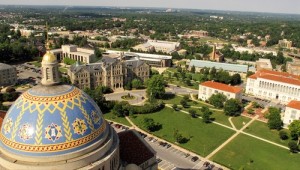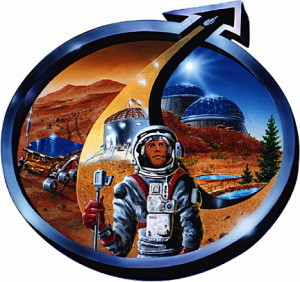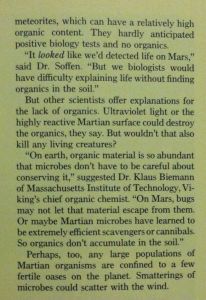Guest blog by Dale Hammond
 This following describes how a California launch facility and a pair of accidents there spoke less about failure and more about the resilience and perseverance of human efforts in orbital space and beyond. Accidental failure occurred not once but twice in the same place within a span of just eight months. But rather than pointing to defeat, the recovery of that facility and the people who worked there led to new and innovative solutions: booster reusability by SLC 4’s current occupant SpaceX and subsequent cost reduction in delivery of payloads to orbit, which is considered paramount to the colonization of Mars. It may also lead in some distant future to the SLC being known in planetary legend and lore as a place that would not go away, that was once and will always be “The Comeback Kid.”
This following describes how a California launch facility and a pair of accidents there spoke less about failure and more about the resilience and perseverance of human efforts in orbital space and beyond. Accidental failure occurred not once but twice in the same place within a span of just eight months. But rather than pointing to defeat, the recovery of that facility and the people who worked there led to new and innovative solutions: booster reusability by SLC 4’s current occupant SpaceX and subsequent cost reduction in delivery of payloads to orbit, which is considered paramount to the colonization of Mars. It may also lead in some distant future to the SLC being known in planetary legend and lore as a place that would not go away, that was once and will always be “The Comeback Kid.”
Space Launch Complex 4, or SLC 4, Vandenberg Air Force Base, began its career as a launch facility for Atlas and Titan rockets. In 1963 two platforms were constructed within the complex: PALC2-3 and PALC2-4. Later, those became what they are known today: SLC 4e and SLC 4w. That whole chapter lasted for 42 years, and then SLC 4 was deactivated. In 2011 it was reactivated, to be leased and refurbished/rebuilt by SLC 4’s next chapter, SpaceX.
 Overall, the PALC/SLC years were good and confidence was high. There were 161 launches at the complex, including the Titan family and the Atlas family of launch boosters. And if this graph from spacelaunchreport.com showing worldwide launches per year is any indication, the past performance of the PALC/SLC tracked, if not improved on, that launch history. Hence, one might assume, like the worldwide success rate, the overall success rate at SLC 4 through 2005 sat at least around 95%.
Overall, the PALC/SLC years were good and confidence was high. There were 161 launches at the complex, including the Titan family and the Atlas family of launch boosters. And if this graph from spacelaunchreport.com showing worldwide launches per year is any indication, the past performance of the PALC/SLC tracked, if not improved on, that launch history. Hence, one might assume, like the worldwide success rate, the overall success rate at SLC 4 through 2005 sat at least around 95%.
However, space presents a well-known slim margin of error. As Gary Payton, Deputy Under Secretary of the Air Force for Space Programs said, “Launch reliability is my top priority. Our constellations for any of our missions cannot tolerate a launch failure.” Further, boosters are not a dime a dozen. Richard M. Rocket, co-founder and CEO of New Space Global, speaking in the wake of a 2015 launch failure said, “It’s not like you can just jump to another launch vehicle.” Each booster is one of a kind, designed for a single purpose and a specific payload. In such a world, failure is not an option: when failure comes, it’s painful.
 But failure, it should be said, is a necessary stepping stone to achieving dreams, whether they are orbital space, lunar exploration, or Mars exploration and colonization. Correspondingly, if there are any years in the American Space program that best embody that characterization, 1985-1986 could be called “model stepping stones.” The most tragic and most publicized incident was the untimely demise of the Space Shuttle Challenger on January 28, 1986. It caused a suspension of the shuttle program for 32 months and formation of the Rogers Commission, appointed by President Ronald Reagan and assigned the task of discovering what exactly went wrong.
But failure, it should be said, is a necessary stepping stone to achieving dreams, whether they are orbital space, lunar exploration, or Mars exploration and colonization. Correspondingly, if there are any years in the American Space program that best embody that characterization, 1985-1986 could be called “model stepping stones.” The most tragic and most publicized incident was the untimely demise of the Space Shuttle Challenger on January 28, 1986. It caused a suspension of the shuttle program for 32 months and formation of the Rogers Commission, appointed by President Ronald Reagan and assigned the task of discovering what exactly went wrong.
As for Vandenberg Air Force Base in the wake of the Challenger accident, it was dealt an indirect but personal blow as the Air Force elected to cancel use of Vandenberg’s Space Launch Complex 6 (SLC 6) for classified Shuttle military launches. Less known of that period are the ’85 and ’86 launch accidents at SLC 6’s Vandenberg neighbor, SLC 4.
 By the middle of 1985 at SLC 4, no Titan had failed in 18 years. Then August 18, 1985, came along. At SLC 4e a Titan 34D-7 was poised on the launch pad carrying a KH-11 photo-reconnaissance satellite. The mighty Titan lifted off and had a good flight – but not for long. In rapid succession, an unplanned complete engine shutdown, a computer glitch and a premature stage separation led to the Titan tumbling disastrously toward land. At T+272 seconds the destruct command was given, and not long afterward, the Titan sank to its permanent residence, a Pacific grave. Its team, that group of dedicated scientists, engineers and technicians who gave life to the Titan, sought solace in what little was left.
By the middle of 1985 at SLC 4, no Titan had failed in 18 years. Then August 18, 1985, came along. At SLC 4e a Titan 34D-7 was poised on the launch pad carrying a KH-11 photo-reconnaissance satellite. The mighty Titan lifted off and had a good flight – but not for long. In rapid succession, an unplanned complete engine shutdown, a computer glitch and a premature stage separation led to the Titan tumbling disastrously toward land. At T+272 seconds the destruct command was given, and not long afterward, the Titan sank to its permanent residence, a Pacific grave. Its team, that group of dedicated scientists, engineers and technicians who gave life to the Titan, sought solace in what little was left.
But moving forward when all seems lost was in the nature of the SLC 4 crew. They went back to work and found what they believed to be the cause of failure. Corrections were made, and a little under eight months later SLC 4 was ready for another Titan launch.
It was clear on the morning of April 18, 1986: a good day for a launch. This time a Titan 34D-9 was ready to send up a KH-9 photo-reconnaissance satellite.
10:45AM. The Titan headed aloft. Then just above the SLC, the craft erupted into a ball of flame. Debris and toxic propellant showered down on both SLC 4e and SLC 4w. Fortunately, there were no lives lost. But the launch facility was in ruins.
 As President Theodore Roosevelt once said, “The credit belongs to the man [or woman] who is actually in the arena, whose face is marred by dust and sweat and blood; who strives valiantly; who errs, who comes short again and again, because there is no effort without error and shortcoming; but who does actually strive to do the deeds; who knows great enthusiasms, the great devotions; who spends himself [or herself] in a worthy cause.”
As President Theodore Roosevelt once said, “The credit belongs to the man [or woman] who is actually in the arena, whose face is marred by dust and sweat and blood; who strives valiantly; who errs, who comes short again and again, because there is no effort without error and shortcoming; but who does actually strive to do the deeds; who knows great enthusiasms, the great devotions; who spends himself [or herself] in a worthy cause.”
So strive they did. Just 14 months later, in October 1987, SLC 4e reopened. It went on to host the successful launch of two more Titan 34D’s, as well as many other launches.
SLC 4e’s career is far from over. SpaceX is its new, famous occupant, and if SpaceX CEO and CTO Elon Musk’s goal of Mars colonization becomes reality, SLC 4e, “The Comeback Kid,” and the people there who make it all happen will be on the job time and again, carrying on the tradition of resilience and perseverance for humanity’s multi-planet future.
Dale Hammond is a space enthusiast, working at Vandenberg Air Force Base.
Images:
#1 Titan 34 d explosian, slc 4e, 4/18/86; airspacemag.com
#2 Titan 34d at slc 4e ; afspacemuseum.org
#3 SLC 4 in the Titan days: spaceflightnow.com
#4 SLC 4 today; wikimedia
#5 SLC 4e, Falcon Heavy, artists rendition; spaceflightnow.com





















